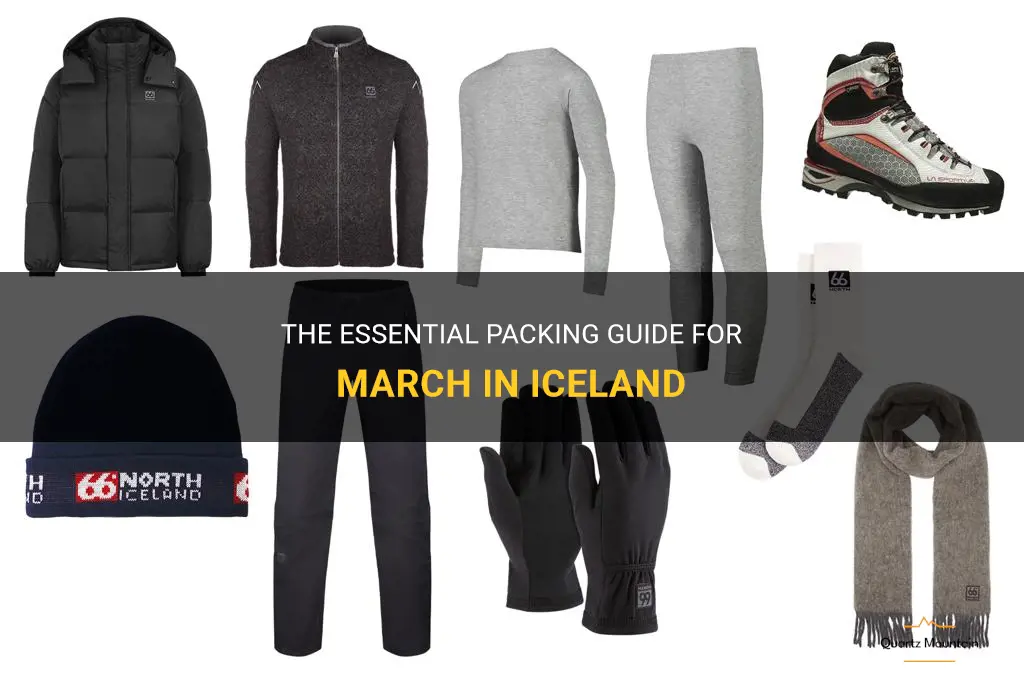
March is a unique and captivating time to visit Iceland. With its magical landscapes and unpredictable weather, packing for this month can be a challenge. But fear not, for we have created the essential packing guide for March in Iceland. From warm layers to waterproof gear, this guide will ensure that you are prepared for whatever Mother Nature throws at you. So grab your backpack and get ready to explore this enchanting country like a true adventurer.
| Characteristics | Values |
|---|---|
| Weather conditions | Variable, cold and windy |
| Average temperature | 0-7C (32-45F) |
| Precipitation | Rain and snow |
| Wind speed | 20-30 km/h (12-19 mph) |
| Daylight hours | 10-12 hours |
| Clothing | Warm layers, waterproof |
| Footwear | Sturdy, waterproof boots |
| Accessories | Hat, gloves, scarf |
| Outdoor activities | Hiking, outdoor tours |
| Indoor activities | Museums, thermal baths |
| Northern Lights | Possible to see |
What You'll Learn
- What are the essential items to pack for a trip to Iceland in March?
- Should I pack warm winter clothing or lighter layers for March in Iceland?
- Are there any specific items or gear that are necessary for outdoor activities in Iceland in March?
- Is it necessary to pack waterproof or insulated footwear for the weather in March in Iceland?
- Are there any specific items that are recommended to bring for photography or sightseeing in Iceland in March?

What are the essential items to pack for a trip to Iceland in March?
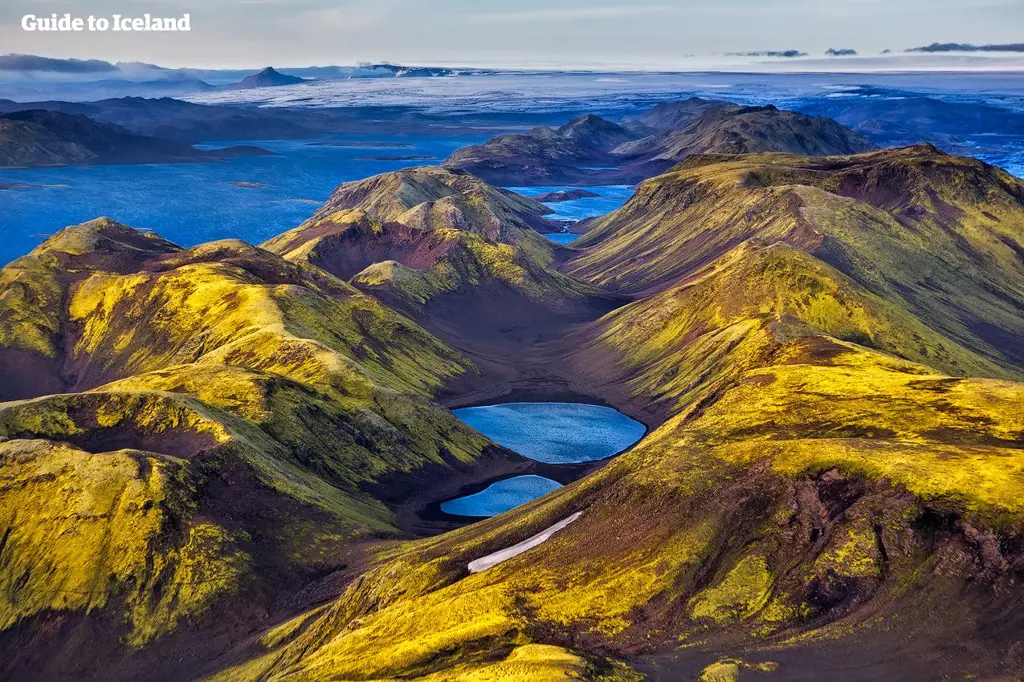
When planning a trip to Iceland in March, it's important to pack strategically to ensure you stay warm and comfortable in the country's chilly climate. Here are some essential items to consider packing for your trip:
- Warm clothing: March in Iceland can still be quite cold, so it's crucial to pack warm clothing. This includes thermal base layers, insulated pants, and a thick, waterproof outer layer. Don't forget to bring warm socks, gloves, and a hat as well.
- Waterproof boots: Iceland is known for its stunning landscapes and natural wonders, which often involve walking or hiking. Invest in a pair of sturdy, waterproof boots to protect your feet from wet terrain and to provide stability on uneven surfaces. It's also a good idea to bring extra pairs of socks to keep your feet dry and warm.
- Layers: Due to Iceland's ever-changing weather, it's best to dress in layers so you can adjust accordingly. Bring a mix of short and long-sleeve shirts, along with sweaters or fleeces that can be easily added or removed as needed. This will allow you to adapt to both chilly outdoor temperatures and warm indoor environments.
- Thermal accessories: In addition to warm clothing, consider packing thermal accessories such as hand warmers and heated insoles. These can provide additional warmth during particularly cold days or activities, making your trip more comfortable.
- Swimwear: Although the weather may not be ideal for swimming, Iceland is famous for its geothermal pools and hot springs. Packing swimwear will allow you to relax and unwind in these unique natural wonders. Many hot springs also offer heated changing facilities, so you can easily transition back into warm clothing afterwards.
- Sun protection: While it may be surprising, sun protection is crucial when visiting Iceland, even in March. The reflection of sunlight off the snow and ice can cause intense UV exposure, leading to sunburns. Be sure to pack sunscreen, sunglasses, and a hat to protect your skin and eyes from the sun's harmful rays.
- Camera gear: Iceland offers breathtaking landscapes, making it a photographer's paradise. If you're interested in capturing stunning images, be sure to pack your camera, extra batteries, a tripod, and additional memory cards. Don't forget to bring a protective case or bag to keep your equipment safe from the elements.
In conclusion, packing smartly for a trip to Iceland in March is essential to ensure you stay warm, comfortable, and prepared for the country's unique climate. By bringing the right clothing, footwear, and accessories, you can fully enjoy the stunning landscapes and natural wonders that Iceland has to offer.
The Essential Packing List for a Memorable Week in Aruba
You may want to see also

Should I pack warm winter clothing or lighter layers for March in Iceland?
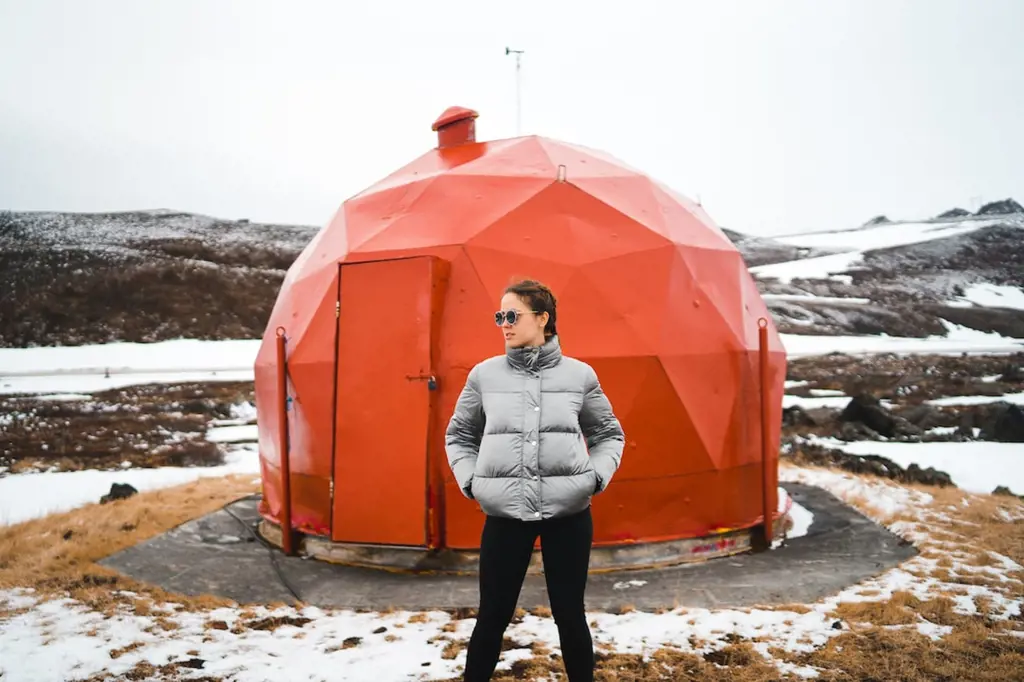
When it comes to packing for a trip to Iceland in March, it's important to consider the weather conditions in order to decide whether to bring warm winter clothing or lighter layers. Iceland's climate in March can be quite unpredictable, with a mix of winter and spring-like weather. Therefore, it is advisable to pack a combination of warm winter clothing and lighter layers to be prepared for various weather conditions.
March in Iceland can still feel very much like winter, with average temperatures ranging from -1°C to 5°C (30°F to 41°F). Snowfall is common during this time, especially in the higher regions of the country. It is essential to have warm winter clothing such as a heavy coat, thermal layers, and insulated boots to stay warm and comfortable in these colder temperatures. A high-quality waterproof jacket and pants are also recommended to protect against rain, sleet, or snow showers.
However, it is worth noting that Iceland's weather can be quite unpredictable, and it is not uncommon to experience milder temperatures and even some sunny days in March. Bringing lighter layers such as long-sleeve tops, sweaters, and fleece jackets will allow you to adjust your clothing according to the changing weather conditions. Layering is key in Iceland, as it allows you to add or remove clothing depending on the temperature.
In addition to warm winter clothing and lighter layers, it is important to pack accessories that will help protect you from the elements. This includes a good quality hat, gloves, and scarves to keep your extremities warm. A pair of sunglasses and sunscreen are also recommended, as the sun's rays can still be strong, even in winter.
It is also important to consider the activities you plan to engage in during your trip to Iceland in March. If you are planning on participating in outdoor activities such as hiking or skiing, it is recommended to bring specialized clothing and equipment designed for those activities. For example, waterproof and insulated hiking boots, thermal socks, and thermal base layers are essential for hiking or skiing in cold and wet conditions.
To summarize, it is advisable to pack a combination of warm winter clothing and lighter layers for a trip to Iceland in March. The country's weather during this time can be quite unpredictable, with a mix of winter and spring-like conditions. By packing a variety of clothing options, you will be prepared for different weather scenarios and can adjust your clothing accordingly. Remember to also pack accessories and specialized gear for any specific activities you plan to partake in during your trip.
Essential items to pack for your infant's daycare needs
You may want to see also

Are there any specific items or gear that are necessary for outdoor activities in Iceland in March?
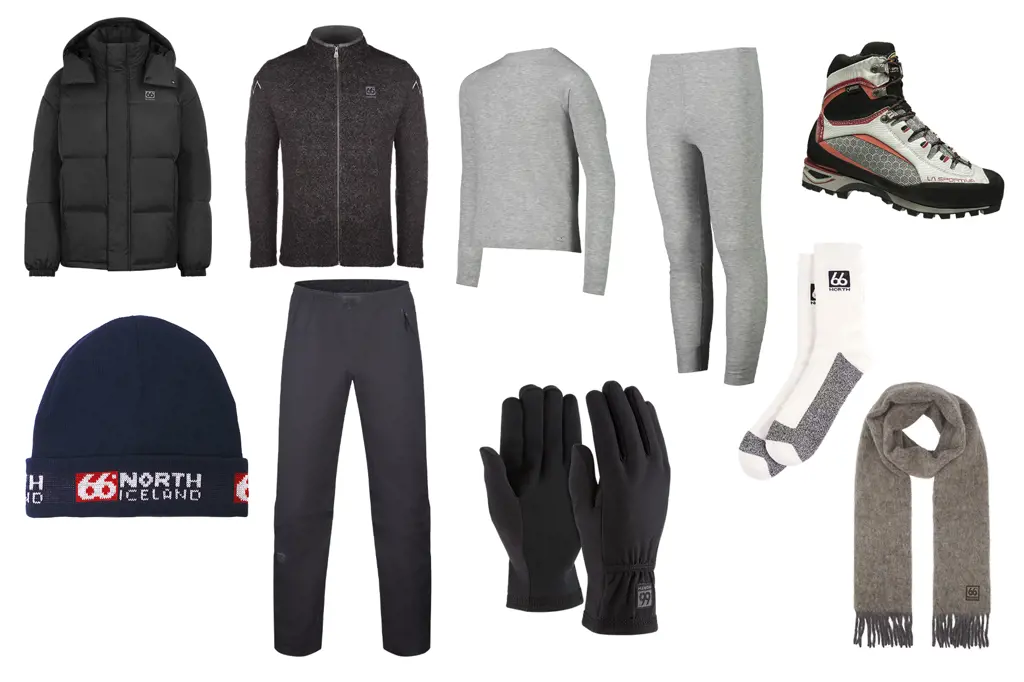
Iceland is a land of extreme weather, and March is no exception. During this time of year, the weather can be unpredictable, with temperatures ranging from below freezing to above freezing, and precipitation taking the form of rain, snow, or sleet. Therefore, it is important to be prepared with the right gear and equipment for outdoor activities in Iceland in March.
Here is a list of necessary items and gear to consider when planning outdoor activities in Iceland in March:
- Thermal Clothing: Layering is key when it comes to dressing for Icelandic weather. Start with a base layer of thermal underwear to keep your body warm. Follow that with a mid-layer of fleece or wool for insulation, and finish with a waterproof and windproof outer layer to protect against the elements.
- Waterproof Boots: Iceland's landscape is known for its rugged terrain and wet conditions. Invest in a pair of waterproof boots with good traction to keep your feet dry and secure footing while hiking or exploring.
- Insulated Gloves and Hat: Heat escapes from the body through the extremities, so it is essential to protect your hands and head. Insulated gloves and a warm hat will help keep you comfortable in the cold.
- Waterproof Backpack: A waterproof backpack is essential for outdoor activities in Iceland in March. It will protect your gear and keep it dry, even in wet and snowy conditions.
- Daypack Essentials: Make sure to pack essentials such as a map, compass, flashlight, extra batteries, a whistle, and a first aid kit. These items can be crucial in case of an emergency or if you get lost.
- Sunglasses and Sunscreen: Despite the cold weather, the sun's rays can still be strong in Iceland, especially when reflecting off snow. Protect your eyes and skin with sunglasses that offer UV protection and a high SPF sunscreen.
- Reusable Water Bottle: Staying hydrated is important during outdoor activities. Bring a reusable water bottle to sip on throughout your adventures.
- Snacks: Pack energy-rich snacks such as trail mix, granola bars, and dried fruit to keep your energy levels up during your outdoor activities.
- Camera: Don't forget to bring along a camera to capture the breathtaking landscapes and natural beauty of Iceland. Make sure to pack extra batteries or a portable charger to keep your camera powered.
- Navigation Tools: If you plan on exploring off the beaten path, consider bringing a GPS device or a reliable map and compass to navigate through the wilderness.
It is also worth mentioning that when planning outdoor activities in Iceland in March, it is always best to check the weather forecast and be prepared for changing conditions. Additionally, it is recommended to inform someone of your plans and estimated return time in case of any unforeseen circumstances.
In conclusion, when preparing for outdoor activities in Iceland in March, it is important to have the right gear and equipment to protect against the unpredictable weather. This includes thermal clothing, waterproof boots, insulated gloves and hat, a waterproof backpack, daypack essentials, sunglasses and sunscreen, a reusable water bottle, snacks, a camera, and navigation tools. By being well-prepared and informed, you can fully enjoy the stunning landscapes and outdoor adventures that Iceland has to offer.
Essential Items to Pack for a Day at Schlitterbahn
You may want to see also

Is it necessary to pack waterproof or insulated footwear for the weather in March in Iceland?
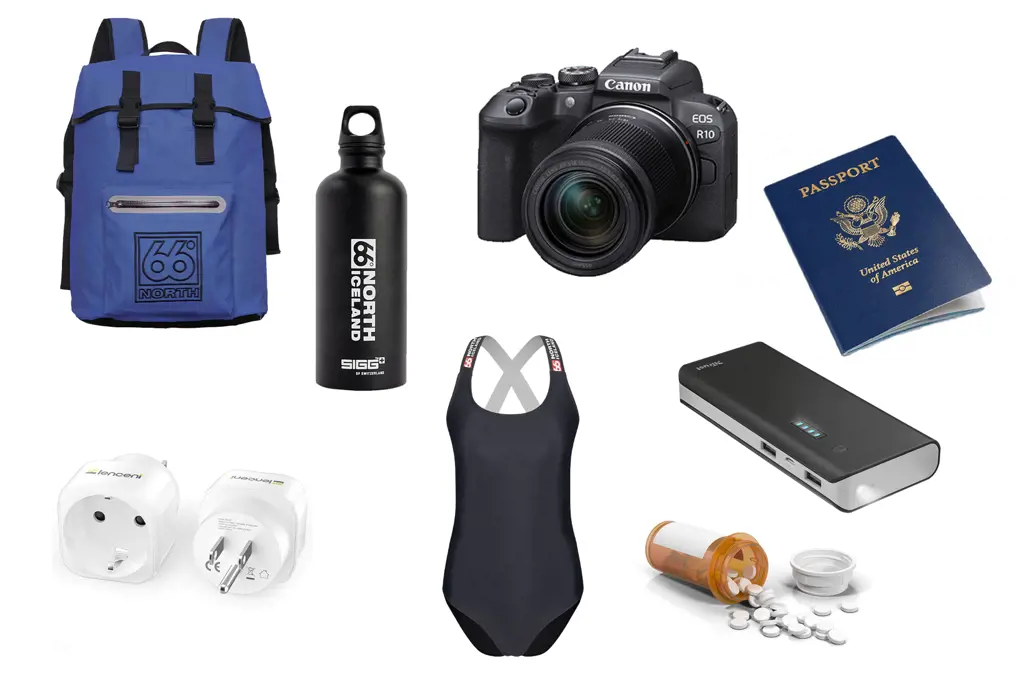
When preparing for a trip to Iceland in March, it is important to consider the weather conditions and pack accordingly, especially when it comes to footwear. Iceland's weather in March can be quite unpredictable, with temperatures ranging from -5°C to 5°C (23°F to 41°F) on average. Snow and rain are common during this time of year, making it essential to have suitable footwear to protect your feet from the cold and wet conditions.
Waterproof footwear is highly recommended for March in Iceland. With the potential for rain and snowfall, you don't want to risk having wet feet all day. Waterproof boots or shoes will keep your feet dry and comfortable, allowing you to explore the elements without worrying about wet socks or potential cold-related health issues such as frostbite.
Insulated footwear is also crucial for the Icelandic weather in March. The temperatures can be chilly, and having insulated footwear will help keep your feet warm and cozy. Insulated boots or shoes provide an extra layer of insulation, trapping the warmth and preventing the cold from seeping in. This can be particularly important if you plan on spending extended periods of time outdoors or participating in activities such as hiking or exploring glaciers.
Iceland is known for its stunning landscapes, and many of these can be accessed through hiking or trekking adventures. Having appropriate footwear is essential for these activities, and packing waterproof and insulated options will ensure your feet remain protected and comfortable throughout your excursions.
In addition to protecting your feet from the weather conditions, it is also important to consider the terrain in Iceland. The country is famous for its rugged landscapes, and proper footwear can provide stability and traction, especially when walking on uneven or slippery surfaces. Choosing footwear with a sturdy sole and good grip will help prevent slips and falls, reducing the risk of injuries.
To further illustrate the importance of waterproof and insulated footwear, let's consider a concrete example. Imagine you are hiking to one of Iceland's famous waterfalls in March. The trail is covered in snow, and as you make your way closer to the waterfall, the snow turns to slush. Without waterproof footwear, your feet would quickly become wet and freezing, making the rest of the hike uncomfortable and potentially dangerous. On the other hand, with waterproof and insulated boots, you would be able to enjoy the hike, staying warm and dry, and fully appreciating the beauty of the waterfall.
In conclusion, packing waterproof and insulated footwear for a trip to Iceland in March is necessary to protect your feet from the cold, wet, and unpredictable weather conditions. It ensures your comfort, safety, and enjoyment while exploring the country's stunning landscapes. By investing in appropriate footwear, you can fully immerse yourself in the beauty of Iceland without worrying about wet or cold feet.
Essential Items to Pack for a Volleyball Game: A Comprehensive Guide
You may want to see also

Are there any specific items that are recommended to bring for photography or sightseeing in Iceland in March?
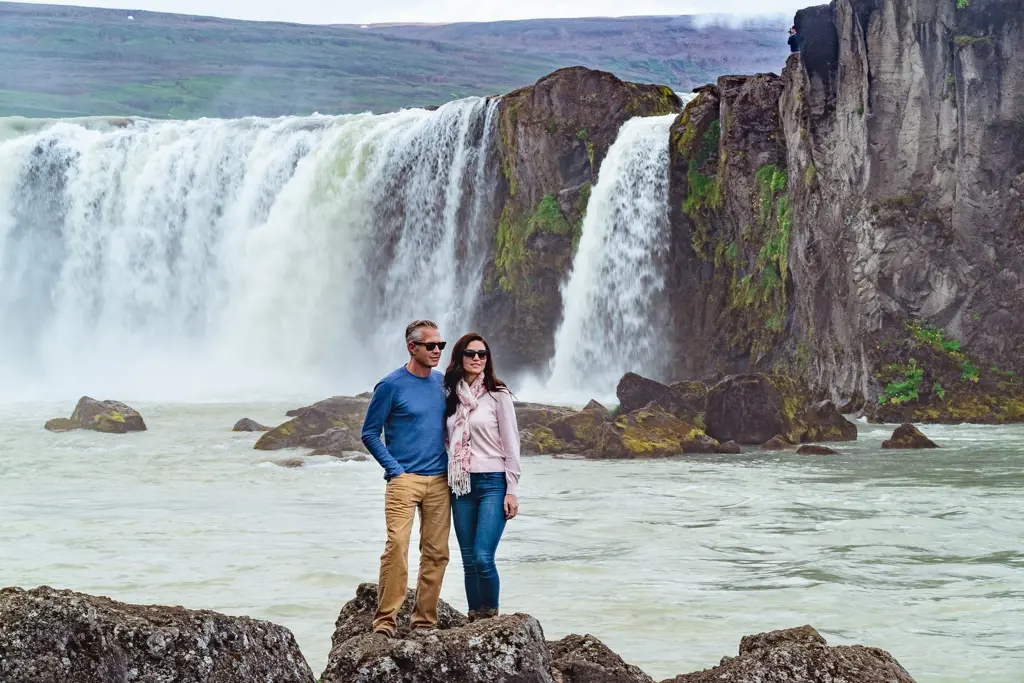
When it comes to photography or sightseeing in Iceland in March, it's important to be prepared for the unique conditions that this time of year brings. While the landscape in March can be incredibly beautiful, it can also be quite challenging to photograph and navigate. Here are some specific items that are recommended to bring for photography or sightseeing in Iceland in March:
- Warm clothing: Iceland in March can be quite cold, with temperatures ranging from 20 to 30 degrees Fahrenheit. It's important to dress in layers and wear warm, waterproof clothing, including a good quality winter jacket, thermal base layers, and insulated pants. Don't forget accessories like gloves, scarves, and a hat to keep you warm.
- Good hiking boots: Exploring Iceland's breathtaking landscapes often involves hikes on uneven terrain, so it's essential to have a sturdy pair of waterproof hiking boots. Make sure they are comfortable and provide ankle support for added stability.
- Camera gear: Iceland's dramatic landscapes are a photographer's dream, so be sure to bring your camera and a selection of lenses. For landscape photography, a wide-angle lens is essential to capture the vastness of the scenery. A sturdy tripod is also recommended for long exposure shots or capturing Northern Lights. Additionally, don't forget to pack extra batteries, memory cards, and lens cleaning supplies.
- Filters: To get the best possible shots in the ever-changing Icelandic weather, consider bringing a set of filters. Neutral density (ND) filters can help create a long exposure effect for capturing flowing water or ethereal clouds, while polarizing filters can enhance colors and reduce glare. Graduated ND filters are useful for balancing exposure in scenes with a significant difference between the dark foreground and bright sky.
- GPS and maps: Iceland's landscape is vast and can be challenging to navigate, especially if you plan to venture off the beaten path. Bringing a GPS device or using a reliable navigation app on your smartphone is highly recommended. However, it's also essential to have a backup plan in case technology fails, so always carry physical maps as well.
- Backpack and waterproof covers: Carrying all your photography gear and supplies around requires a comfortable and durable backpack. Look for one that is water-resistant and has enough compartments to keep your equipment organized. Additionally, invest in waterproof covers for your backpack and camera to protect them from rain, snow, and strong winds.
- Snacks and water: When exploring Iceland's stunning landscapes, it's important to stay hydrated and energized. Pack non-perishable snacks like energy bars or trail mix, and bring a reusable water bottle with you. Iceland has many natural water sources, so you can refill your bottle along the way.
- Safety equipment: As with any outdoor adventure, safety should be a priority. Be sure to pack a basic first aid kit, a whistle, and a flashlight with extra batteries in case of emergencies. It's also a good idea to bring a handheld GPS beacon for added safety.
By being prepared with the right clothing, gear, and supplies, you can fully enjoy and capture the beauty of Iceland in March. Remember to always respect the environment and follow local regulations to ensure a safe and memorable experience.
Essential Items to Pack for Your Bandon Dunes Golf Trip
You may want to see also
Frequently asked questions
When packing for Iceland in March, it is important to bring warm and waterproof clothing. Layers are key, as the weather can be unpredictable and temperatures can vary throughout the day. Be sure to pack a good quality waterproof jacket, thermal base layers, fleece or wool sweaters, and waterproof pants. Don't forget to pack warm socks, gloves, and a hat to protect yourself from the cold Icelandic winds.
Yes, it is recommended to bring sturdy waterproof boots with good traction for a trip to Iceland in March. The weather can be wet and snowy, and you'll often find yourself exploring the rugged landscapes and hiking on uneven terrain. Having waterproof boots will help keep your feet dry and warm, and the good traction will prevent any slipping or accidents on icy surfaces.
In addition to warm clothing and footwear, there are a few accessories and gear items that are useful to have for a trip to Iceland in March. A good quality backpack is essential for carrying your essentials during day hikes or excursions. You may also want to bring a reusable water bottle and a thermos to keep your drinks hot. It is also a good idea to bring a camera, as Iceland offers stunning natural landscapes that you won't want to miss capturing.
While you can find most toiletries and personal care items in Iceland, it is always good to have a few essentials packed in your luggage. It is recommended to bring a good moisturizer and lip balm, as the cold weather and wind can be harsh on your skin. If you have any specific personal care needs, such as prescription medications or special hair products, it is advisable to bring those with you to ensure you have everything you need during your trip.
In Iceland, the power plugs and sockets are of type F, so it is advisable to bring an adapter if your electronic devices have a different plug type. It is also a good idea to bring a power bank or portable charger, as you may find yourself on long hikes or excursions where you won't have access to a power source. Additionally, if you plan on using your phone or camera to capture the stunning Icelandic landscapes, it is recommended to bring extra memory cards or storage devices to ensure you have enough space for all your photos and videos.







